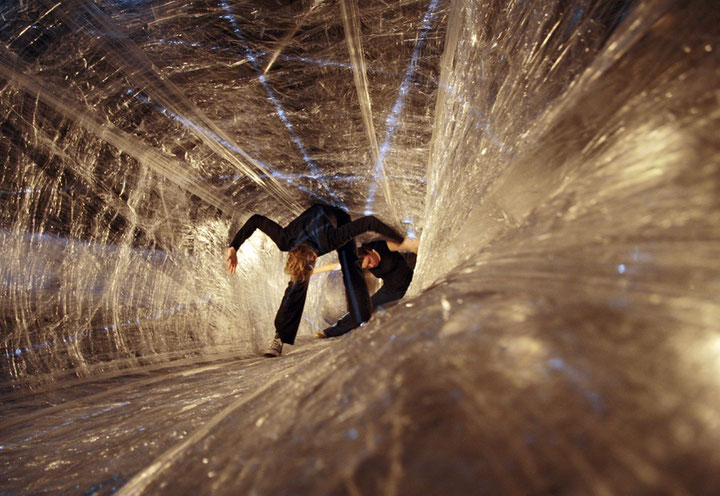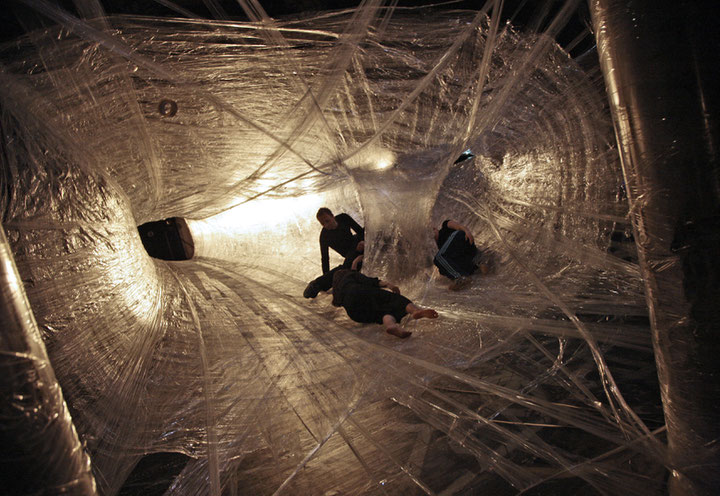Issue 2/2010 - Intermedia 2.0
Thinking across Disciplines
On the relevance of intercreativity from the viewpoint of the funding initiative »departure«
Intercreativity is a fresh, not-yet-overused expression for a familiar topic – approaches that transcend the boundaries between different artistic and creative disciplines. Throughout cultural history, cross-fertilization between disciplines has led to creative heydays – we need only think of the outstanding achievements in Vienna circa 1900. In the past decades, such exchange has become an integral part of artistic production. Recently, this phenomenon is attracting greater recognition, not least in terms of stage production. For example, in an article in the »New York Times« on 10 March 2010 titled »Regarding ›The Nose‹ and the Eye and the Ear« about artist William Kentridge’s new production of Shostakovich’s »The Nose« at the Metropolitan Opera, the American art critic Roberta Smith declared: »But I’d say the sky’s the limit in terms of future collaborations among visual and performing artists. For one thing, so many artists already work in multiple mediums, including music, or incorporate aspects of performance into their work. There’s already quite a bit of cross-fertilization. There is only going to be more.«
The terminology is inconsistent, as is demonstrated by the prevalence of related terms such as interdisciplinarity, transdisciplinarity or intermedia, all the way to the Gesamtkunstwerk. A new term such as »intercreativity« can therefore be regarded as a chance to reassess the defining criteria for judging these sector-straddling approaches from today’s standpoint. Surprisingly, the question of the Gesamtkunstwerk – which is admittedly viewed with caution or skepticism nowadays – touches in particular on a central tenet of the contemporary discourse on intercreativity, by namely leaving open whether a total work of art is the result of transdisciplinary work by a single genius (to use that rather old-fashioned term) or the product of interdisciplinary collaboration among several artists or creatives from different fields (»collective genius«).
We live in a world of digital interconnectedness and communication. Terms such as
»participatory web,« »prosumers« and »crowdsourcing« demonstrate how much value is attached to the inputs of as many users as possible. »Open Creativity« – creativity that is open to any direction of thought and is able to turn colorful diversity into a virtue rather than a fancy – is the new motto. The individual genius who dominates the process is apparently less in demand these days than creative teamwork, the fruitful collaboration of different creative minds. Not only are one’s own ideas important in the creative process, but also the ideas of others. Thus, from today’s point of view, projects in which two or more artists/creatives from different areas converge and work together deserve special attention.
The digital tools and methods of communication available at present not only facilitate teamwork within a single field but also help to transcend the boundaries between them. Individual artists naturally have completely unique work processes, but there are certain rules that are typical and characteristic of artistic work in specific disciplines that may make intercreative projects more difficult. Digital networking can bridge these gaps between different working methods.
Furthermore, the ease of digital production allows for innovative attempts at mediation between different areas (for example, novel approaches to classical music through the use of visualization) while also making possible previously unknown, hybrid forms of art that can lastingly enhance and extend our cultural spectrum. In this sense, the combination of live readings of literary texts, live visualization and live music performance can present new ways of engaging with the respective texts by supplementing them with visual or musical artistic material to offer the recipients fascinating new perspectives. Intercreativity is hence showing us new horizons for creative development towards a contemporary Gesamtkunstwerk that congenially meshes the artist’s own ideas and those of others with the advantages of the digital age.
What we are dealing with today is therefore not merely a remake of earlier interdisciplinary and multidisciplinary approaches, but a confrontation with heretofore unknown possibilities offered by the interplay of creative personalities from completely different fields. The innovative aspect here is that the potentials unlocked by this method can be very effectively combined. What we are witnessing today is an innovative »relaunch« of this topic and the creation of new interdisciplinary lab constellations in which the available digital possibilities of intercreativity can also be tested in a variety of ways.
If the arts demand of their audience that they must be open-minded and think outside the box, they must also strive to achieve these same ideals. The closer different fields are to each other, the more suited they seem for a creative exchange between them; especially fine art, design and architecture share many interconnections. Nonetheless, too many fields often fail to look beyond the ends of their own noses. This is unfortunately also true for the theatre, because too often it happens that the most provocative, scandalous star director turns out to be rather conservative when it comes to the friction and clashes created by working together with other independent individuals with their own creative handwriting, as opposed to just expressing himself with the help of his own seasoned team. There are often legitimate practical reasons for this preference for trained perfection within one’s own branch rather than dealing with undisciplined, surprise encounters. Entirely different sets of rules prevail in theatre than for museums or product design. For this very reason, a serious analysis of such problems is required. As a rule of thumb, one could say: the more well-known those involved are, the harder it is (due to time restrictions alone) to invest enough quality and intensity into the preparation of such a project.
The intention here is not to vilify interdisciplinary approaches or to glorify intercreativity as an end in itself – poorly conceived projects can easily backfire. In order to carve out a general framework of rules that would help to ensure the success of intercreative projects, it is necessary to carefully examine representative projects in the past (even those that failed miserably) and to ensure a broad exchange of experiences and opinions. For this purpose, individuals who are grappling with these ideas and questions for the first time are just as welcome as those who have already had impressive experiences in this area. As always, the key can be found in the objectives and motivations behind interdisciplinary projects, in particular the question as to what extent artists and creatives can benefit from working on projects together with those from different creative fields, and whether this collaboration can add value to their own work.
Intercreative projects are multifaceted adventures into unknown territory riddled with surprises. The aim of departure’s new initiate is not only to draw more attention to the creative and artistic potential of intercreativity. Even more so, in its role as the official creative agency of the city of Vienna and part of the Wiener Wirtschaftsförderungsfonds, it wants to do justice to contemporary artistic work and generate more demand for creative productions through the interdisciplinary interconnections of different realities.
Translated by Jennifer Taylor



